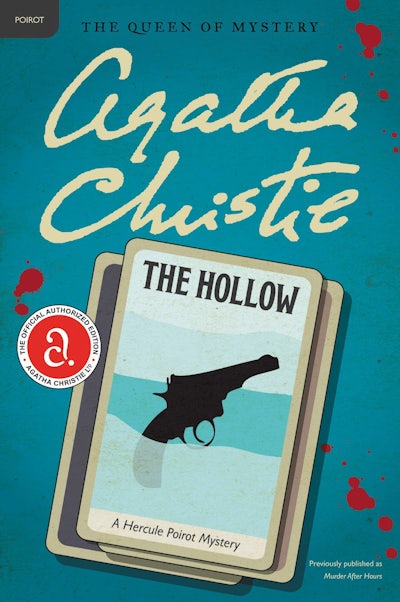The Hollow

Lucy Angkatell invited Hercule Poirot to lunch. To tease the great detective, her guests stage a mock murder beside the swimming pool. Unfortunately, the victim plays the scene for real. As his blood drips into the water, John Christow gasps one final word: ‘Henrietta’. In the confusion, a gun sinks to the bottom of the pool.
Poirot’s enquiries reveal a complex web of romantic attachments. It seems everyone in the drama is a suspect – and each a victim of love.
Suddenly, with a terrific shock, with that feeling as of blurring on a cinematograph screen before the picture comes to focus, Hercule Poirot realised that this artificially set scene had a point of reality.
More about this story
First published as a novel in the US in 1946 by Dodd, Mead and Company, The Hollow remains an example of classic Christie: a gathering of guests at a country house is disturbed by a sudden death and luckily Poirot is in attendance. The main players include a downtrodden wife, her successful husband, and the reappearance of an old flame. It was originally published in the US as Murder after Hours.
A grade A plot - the best Christie in years.
Ignoring her daughter Rosalind's protests, Agatha Christie decided to adapt The Hollow for stage, affectionately describing Rosalind as having “the valuable role in life of eternally trying to discourage me without success”. So the play was adapted, Poirot ousted, and it was produced in 1951 under the same title, The Hollow. One reviewer described it as “ingenious entertainment”.
It was adapted for TV in 2004 and starred David Suchet. Some changes were made to the narrative, but overall it remained fairly true to the novel.


 UK
UK 



